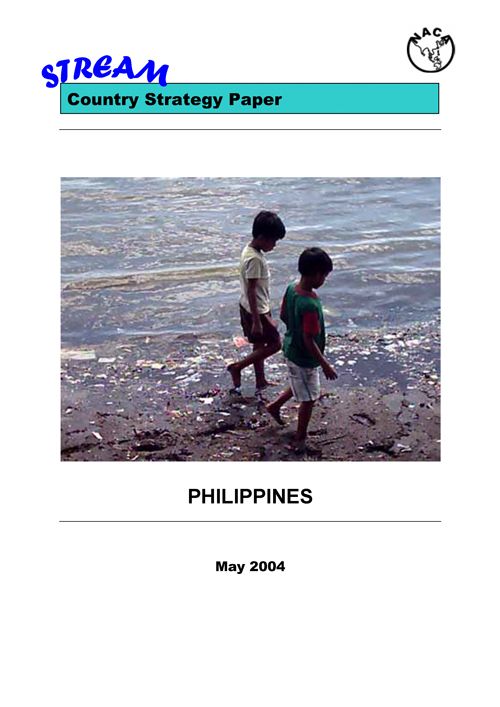Philippines country strategy paper
23 June 2004 | 1257 Downloads | .pdf | 238.84 KB | Gender, Governance and Policy, Livelihoods, gender and social issues, Philippines
In 2002, the Philippines Government signed a Partnership Agreement with the NACA-STREAM Initiative. The initial focal point for STREAM work is Western Visayas, including the Sapian Bay and Banate Bay areas where BFAR Region 6, the STREAM country host, has on-going engagements, and also areas within Regions 6 and 7 where marine ornamentals collection and trading occur.
The key disadvantaged groups (identified through a National Poverty and Aquatic Resources Review) for whom aquatic resources are a source of livelihood are the primary stakeholders for the initiative. These include people who are directly engaged in fishing activities (municipal or artisanal fishers including gleaners and shell gatherers), seasonal fish pond workers, regularly-paid fish workers, and groups who depend on non-fishing livelihoods activities in fishing communities (including fish vendors, fish processors, fish buyers, and fish trap and boat builders). Municipal fishers’ access mainly bays, rivers, lakes, coral reefs and mangrove forests in coastal municipalities around the country.
The Philippines rank 85 out of 175 countries in terms of Human Development Index. Poverty is most acute and widespread in rural areas, including many coastal municipalities, where 54% of people are living below the poverty line. Dependence on coastal and inland aquatic resources is high among rural poor people, who tend to be self-employed, primarily in agriculture, fisheries and casual labour. They are almost all landless.
In 1991 the Philippines moved toward greater empowerment of people through efforts to decentralise political power, responsibility, functions and provision of services to Local Government Units (LGU), i.e., barangays, municipalities, cities and provinces. This included the management of fisheries and coastal resources. In 1997 the government aimed to provide a framework for the modernisation of the agriculture and fisheries sectors. ‘Modernisation’ – including for small-scale farmers and fishers – was to be supported from a competitiveness enhancement fund, though few small-scale operators have so far benefited. In 1998 the Philippine Fisheries Code aimed to clarify roles and jurisdictions and to enhance participation of all (including poor) stakeholders in decision-making through Fisheries and Aquatic Resources Management Councils (FARMCs).
The objectives of STREAM Philippines are to:
- Better understand the livelihoods of poor and vulnerable aquatic resources users.
- Better understand how institutions can support poor people’s livelihoods.
- Support better policy development and improved programs in support of the livelihoods objectives of poor and vulnerable aquatic resources users.
- Improve communications among all STREAM stakeholders focused on enabling poor and vulnerable aquatic resources users to move out of poverty.
STREAM Philippines will:
- Share livelihoods approaches and analysis to broaden livelihoods understanding.
- Complement capacity-building of BFAR staff and other partners.
- Propose the discussion and drafting of a national fisheries extension program which would aim to address the dislocation of the national line agency from its original clients and could serve as a framework for supporting local governments’ fisheries programs.
- Work with others to improve appreciation of and strengthening of the FARMC concept in the context of a national fisheries extension program and strongly linked to IEC (information, education and communication) approaches.
- Build on the Information Access Survey and, in support of BFAR (including Region 6), develop IEC strategies that will appropriately communicate policies, processes, lessons learned and significant change stories.
Creative Commons Attribution.

